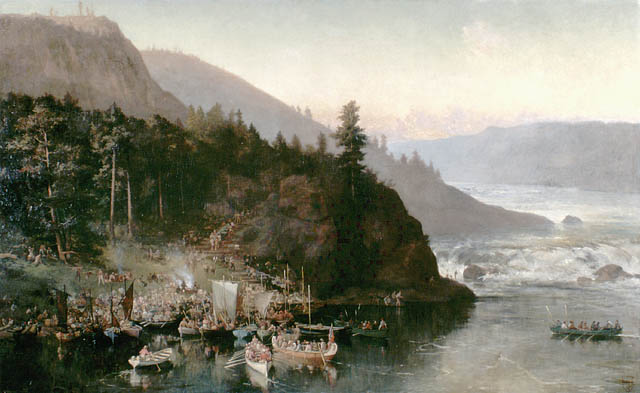… unfortunate urban signage, below the fold. Almost as funny as the juxtaposition on Grand Avenue in Escondido that my daughter and I spotted about ten years ago: a sushi restaurant right next door to a tropical fish emporium…
North America
Humanity among Monsters: The Descent of Mexico
[Cross-posted at zenpundit.com]
From Boing Boing:
A kindergarten teacher in Mexico seeks to protect her students and calm their fears as narco-cartel fighters conduct a raging gun battle outside the window of her school. The woman has nerves of iron.
But hey…..Mexico can’t have an “insurgency” because the narcos don’t have “political” goals. Or a unified political goal. Or because there are still good vacation deals there at all-inclusive resorts. Or….Or…Or…. whatever flimsy rationale helps policy makers continue to punt the war next door.
Wolseley’s Red River Expedition of 1870
As I previously mentioned, my favorite book from last year was the memoirs of Lord Wolseley. I am currently reading a decent biography of Wolseley, The Model Major General, A Biography of Field-Marshall Lord Wolseley by Joseph H. Lehmann (1964). Lehmann’s book fills in many interesting details, but it cannot possibly capture the verve and excitement and unrefined Victorian era honesty and cultural confidence of the memoir, which is in Wolseley’s own words. I remember picking up the Lehmann book years ago, it was marked as $6, but it was half off because it had sat on the shelf at Bookman’s Corner for over a year. It is amazing that a man as world-renowned, powerful and influential as Wolseley should have fallen into such absolute obscurity. In 1890 literally anyone in the world who could read a newspaper would have known who he was. Now it may be the case that not one person in a million has heard of him, i.e. that maybe fewer than 7,000 people in the world know who he was. Such is the fleetingness of fame and human greatness.
One of the most stirring parts of Wolseley’s altogether thrilling memoir is his account of the Red River Expedition of 1870.
Two snippets will give a flavor.
Skulls & Human Sacrifice: Bunker and Sullivan on Mexico’s Societal War
[cross-posted from zenpundit.com]


Altars to Santa Muerte, “Saint Death” to the poor and the narcocultos
SWJ has been en fuego the last few days and this is the first of several that I recommend that readers give close attention.
Dr. Robert J. Bunker and Lt. John Sullivan are indicating that the canary in the coal mine phase of Mexico’s narco-insurgency has passed. Mexican society is entering a new and more dangerous period of accelerating cultural devolution. Narco-insurgent violence has shifted from the economically motivated and brutally instrumental of organized crime syndicates everywhere to culturally totemic and ghastly ceremonials out of tribal prehistory:
Extreme Barbarism, a Death Cult, and Holy Warriors in Mexico: Societal Warfare South of the Border? by Dr. Robert J. Bunker and John P. Sullivan

